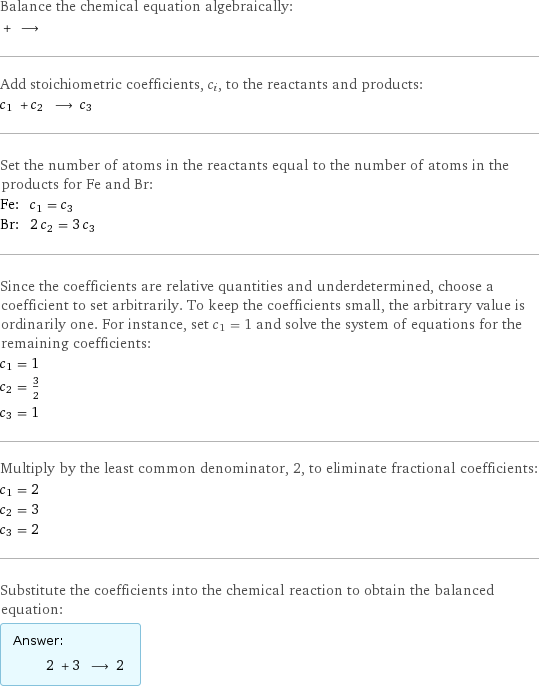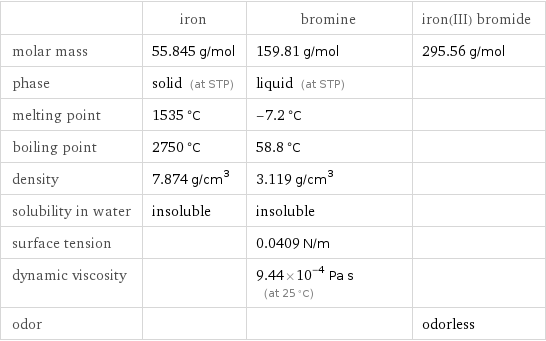Input interpretation

iron + bromine ⟶ iron(III) bromide
Balanced equation

Balance the chemical equation algebraically: + ⟶ Add stoichiometric coefficients, c_i, to the reactants and products: c_1 + c_2 ⟶ c_3 Set the number of atoms in the reactants equal to the number of atoms in the products for Fe and Br: Fe: | c_1 = c_3 Br: | 2 c_2 = 3 c_3 Since the coefficients are relative quantities and underdetermined, choose a coefficient to set arbitrarily. To keep the coefficients small, the arbitrary value is ordinarily one. For instance, set c_1 = 1 and solve the system of equations for the remaining coefficients: c_1 = 1 c_2 = 3/2 c_3 = 1 Multiply by the least common denominator, 2, to eliminate fractional coefficients: c_1 = 2 c_2 = 3 c_3 = 2 Substitute the coefficients into the chemical reaction to obtain the balanced equation: Answer: | | 2 + 3 ⟶ 2
Structures

+ ⟶
Names

iron + bromine ⟶ iron(III) bromide
Chemical names and formulas

| iron | bromine | iron(III) bromide Hill formula | Fe | Br_2 | Br_3Fe name | iron | bromine | iron(III) bromide IUPAC name | iron | molecular bromine | tribromoiron
Substance properties

| iron | bromine | iron(III) bromide molar mass | 55.845 g/mol | 159.81 g/mol | 295.56 g/mol phase | solid (at STP) | liquid (at STP) | melting point | 1535 °C | -7.2 °C | boiling point | 2750 °C | 58.8 °C | density | 7.874 g/cm^3 | 3.119 g/cm^3 | solubility in water | insoluble | insoluble | surface tension | | 0.0409 N/m | dynamic viscosity | | 9.44×10^-4 Pa s (at 25 °C) | odor | | | odorless
Units
